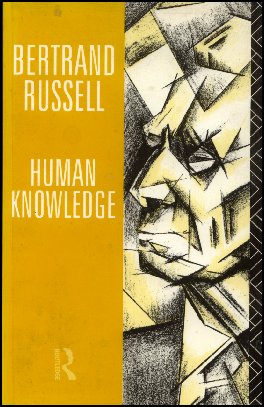
要約しよう。
場合に応じて真あるいは偽であるという特性を持つものは、一次的には信念 であり、ただ二次的にのみ文である。(一つの)信念とは、他の(別の)事実にある一定関係を持つあるいは持つ可能性のある(一つの)事実である。私は、「本日は木曜日である」という信念を、木曜日にも その他の日にも、持つことができる(訳注:たとえば、本日は水曜日であるにもかかわらず、木曜日であるという間違った信念を持つことができる)。もし私がその信念を木曜日にもつならば、今日は木曜日であるということ(事実)が存在し、私の信念はその事実に対して、一定の(certain 確かな)特有の関係をもっている。同じ信念をその週の他の曜日にもつならば、(対応する)そういう事実は存在しない。 ひとつの信念が真である場合に,その信念を真ならしめる事実を、私はその信念の「立証者」と呼ぶ(訳注:in virtue of = by virtue of によって)。この定義を完全にするためには、我々は、信念が与えられた時に、もしその(それらの)事実が存在するならば、その信念を真ならしめるであろうところのひとつまたはそれ以上の事実(諸事実)を記述することができなければならない。これは手間のかかる仕事である。なぜなら、ひとつの信念とそれの立証者との間に存在(sibsist 存立)しうる関係がどのようなものであるかは、その信念の性質によって多様である(様々である)からである。この観点から見て、最も単純な事例(case)は、複合的な記憶=心像(memory-image)である(訳注:memory-image 頭のなかで想起するイメージ)。たとえば、私がよく知っている部屋を思い浮かべ(visualize a familiar room 見慣れた部屋)、私の視覚イメージには4つの椅子で囲まれたひとつのテーブルがあり、そうして、私はその部屋に入っていきそのテーブルと4つの椅子を私が見ると仮定すると、私の見るところのものは私が心像(イメージ)に描いたものの立証者である。その信念(部屋には4つの椅子と一つのテーブルがあるという信念)を伴う記憶=心像は、それを立証した知覚と密接かつ明白な対応をもっていたわけである。問題を図式的に(schematically)ごく単純な言葉で表わしてみよう。たとえば、私がBの左にあるAがあるという、言語的ではなくて視覚的な、記憶をもつなら、(実際、目でみたのであるから)事実、AはBの左にある。この事例における(信念と事実との)対応は、全く直接的なものであり、単純明快である(quite direct and straightforward.)。 Aの心像(イメージ)は(実際の)Aに似ており、Bの心像は(実際の)Bに似ており「の左に」という関係は心像(イメージ)においても立証者においても同じである(like)。しかし、我々が(イメージの代わりに)語を用いるや否や、このような極めて単純な型の対応は不可能となる。なぜなら、関係を表わす語は関係(そのもの)ではないからである。「AはBに先行する(先立つ)」と言うとき、この文は3つの語の間の関係であるが、私が主張したいのは二つのものの間の関係である。 「あるい (or) は」とか「な(not) い」 とか 「すべて (all) 」とか 「ある(some) 」 とかいう論理的的な語(論理語)の導入とともに、対応の複雑さは増していく。 しかし、複雑さは増しても、原理は依然として同じである。 『人間の知識』(1948年刊)において、私は真理と虚偽(真偽)とについての議論を次のような定義で結んだ。 「単に行為への衝動にすぎない信念は別として、あらゆる信念は、肯定の感情 (yes feeling) あるいは否定の感情と結びついた、一つの絵(絵画)の性質を帯びている(in the nature of)。肯定の感情の場合(事例)において、一つの原型(プロトタイプ)が心像(イメージ)に対してもつような相似性をその絵に対してもつところのひとつの事実が存在するとき、その信念は「真」である。否定の感情の場合(事例)において、そのような事実が存在しないときにはその信念は「真」である。真ならざる信念は「偽」とよばれる」 (『人間の知識』p.170)。
Chapter 15, n.16
To sum up: It is primarily beliefs and only derivatively sentences that have the property of being true or false, as the case may be. A belief is a fact which has or may have a certain relation to another fact. I can believe that today is Thursday both on Thursday and on other days. If I believe it on a Thursday there is a fact — namely that today is Thursday — to which my belief has a certain distinctive relation. If I believe the same thing on another day of the week, there is no such fact. When a belief is true, I call the fact in virtue of which it is true its ‘verifier’. In order to complete this definition we must be able, given the belief, to describe the fact or facts which, if existent, will make the belief true. This is a long business because the kind of relation that can subsist between a belief and its verifier varies according to the character of the belief. The simplest case from this point of view is that of a complex memory-image. Suppose I visualize a familiar room and in my visual image there is a table surrounded by four chairs, and suppose that on going into the room I see the table and the four chairs, what I see is the verifier of what I imaged ; the memory-image with the belief had a close and obvious kind of correspondence with the perception that verified it. Putting the matter in the schematically simplest terms: I have (let us say) a visual, not verbal, memory of A to the left of B, and in fact A is to the left of B. The correspondence in this case is quite direct and straightforward. The image of A is like A, the image of B is like B, and the relation ‘to the left of’ is the same in the image and in the verifier. But as soon as we use words this simplest type of correspondence becomes impossible, because the word for a relation is not a relation. If I say ‘A precedes B’, my sentence is a relation between three words, whereas what I wish to assert is a relation between two things. The complexity of the correspondence grows greater with the introduction of logical words such as ‘or’ and ‘not’ and ‘all’ and ‘some’. But, although the complexity is increased, the principle remains the same. In Human Knowledge I concluded the discussion of truth and falsehood with the following definition: ‘Every belief which is not merely an impulse to action is in the nature of a picture, combined with a yes-feeling or a no-feeling; in the case of a yes-feeling it is “true” if there is a fact having to the picture the kind of similarity that a prototype has to an image; in the case of a no-feeling it is “true” if there is no such fact. A belief which is not true is called “false”.’ (Page 170 .)
Source: My Philosophical Development, 1959, by Bertrand Russell
More info. https://russell-j.com/beginner/BR_MPD_15-160.HTM
